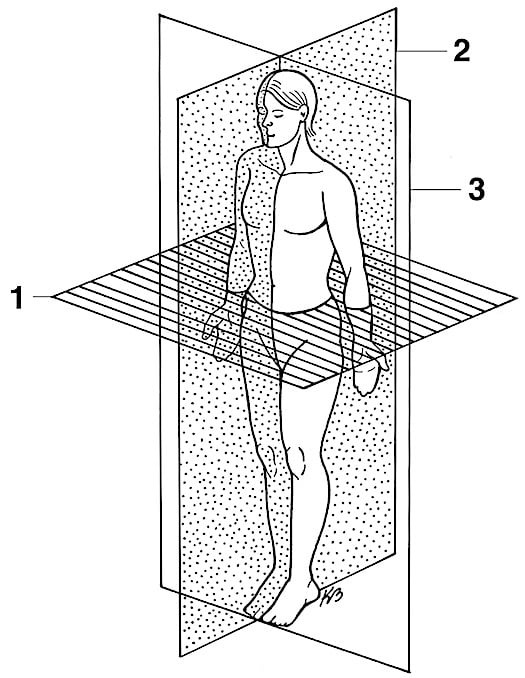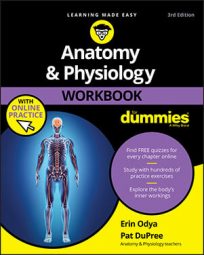Anatomical position is the body facing forward, feet pointed straight ahead, arms resting on the sides, with the palms turned outward. Unless you are told otherwise, this is the body’s position whenever specific body parts are described in reference to other locations.
Because we can only see the external surface of the body, sections must be made in order for us to see what’s inside. It’s important to take note of what type of section was made to provide the view you see in a picture or diagram. There are three planes (directions) in which sections can be made:- frontal: separating the front from the back
- sagittal: dividing right and left sides
- transverse: creating top and bottom pieces
- anterior/posterior: in front of/behind
- superior/inferior: above/below
- medial/lateral: closer to/further from the midline (also used with rotation)
- superficial/deep: closer to/further from the body surface
- proximal/distal: closer to/further from attachment point (used for appendages)
Right and left are also used quite often but be careful! They refer to the patient’s right and left, not yours.
You got it? Let’s find out.Practice Question
- Identify the planes of body sections (numbered 1, 2, and 3) in this figure.

1. Sagittal
2. Transverse
3. Frontal
Answers
- The figure should be labeled as follows:
1—B (transverse)
2—A (sagittal)
3—C (frontal)

